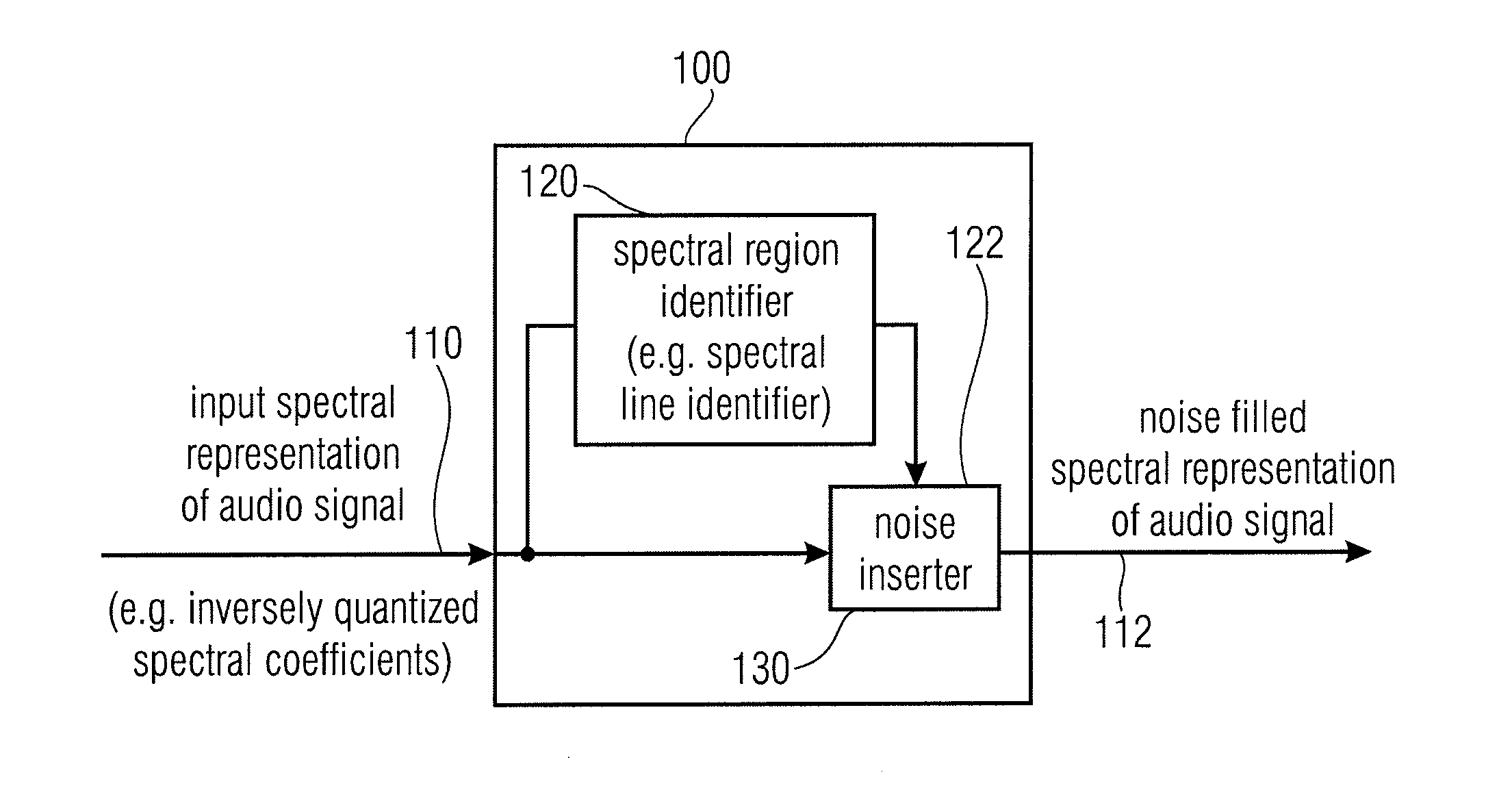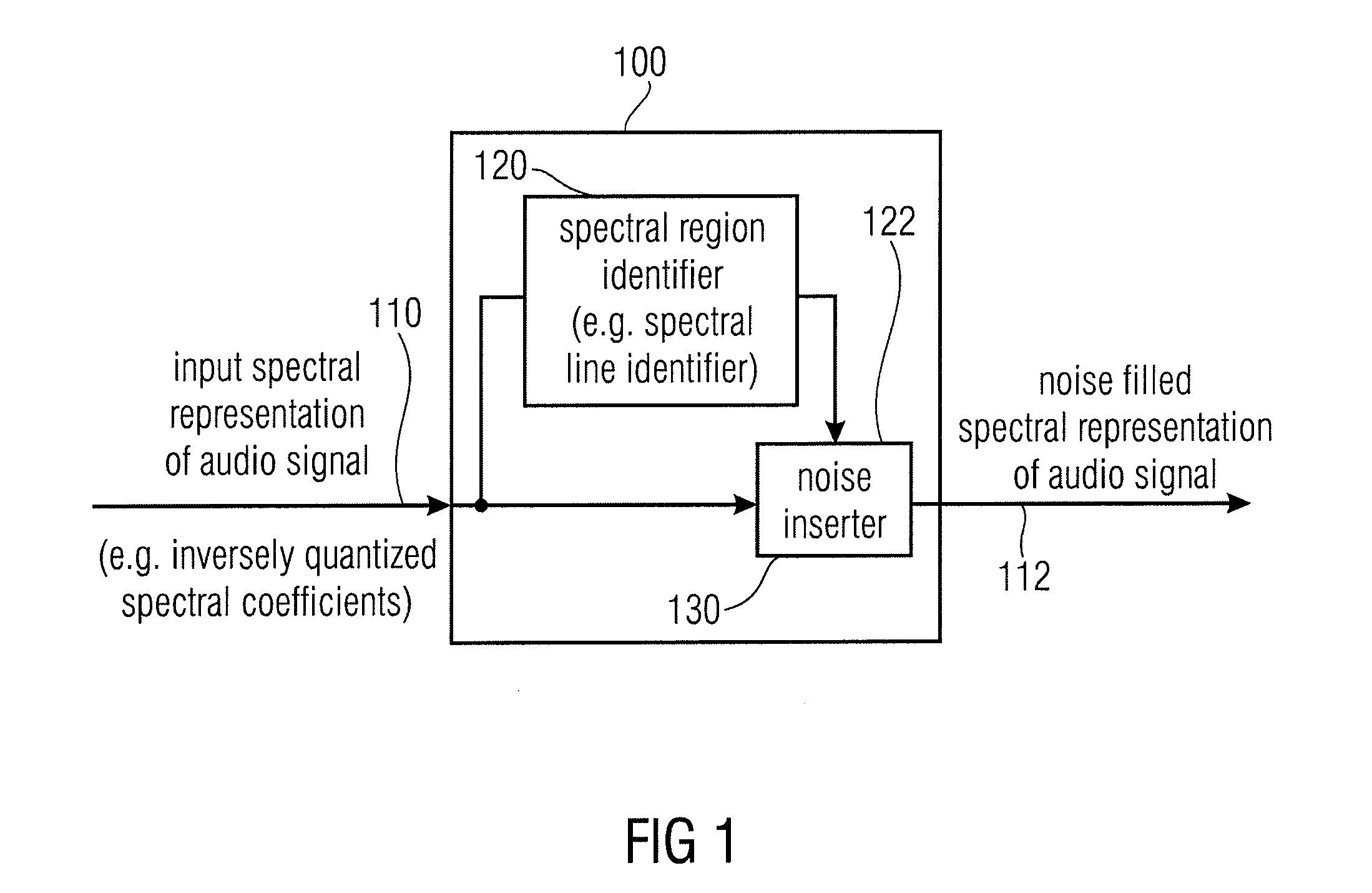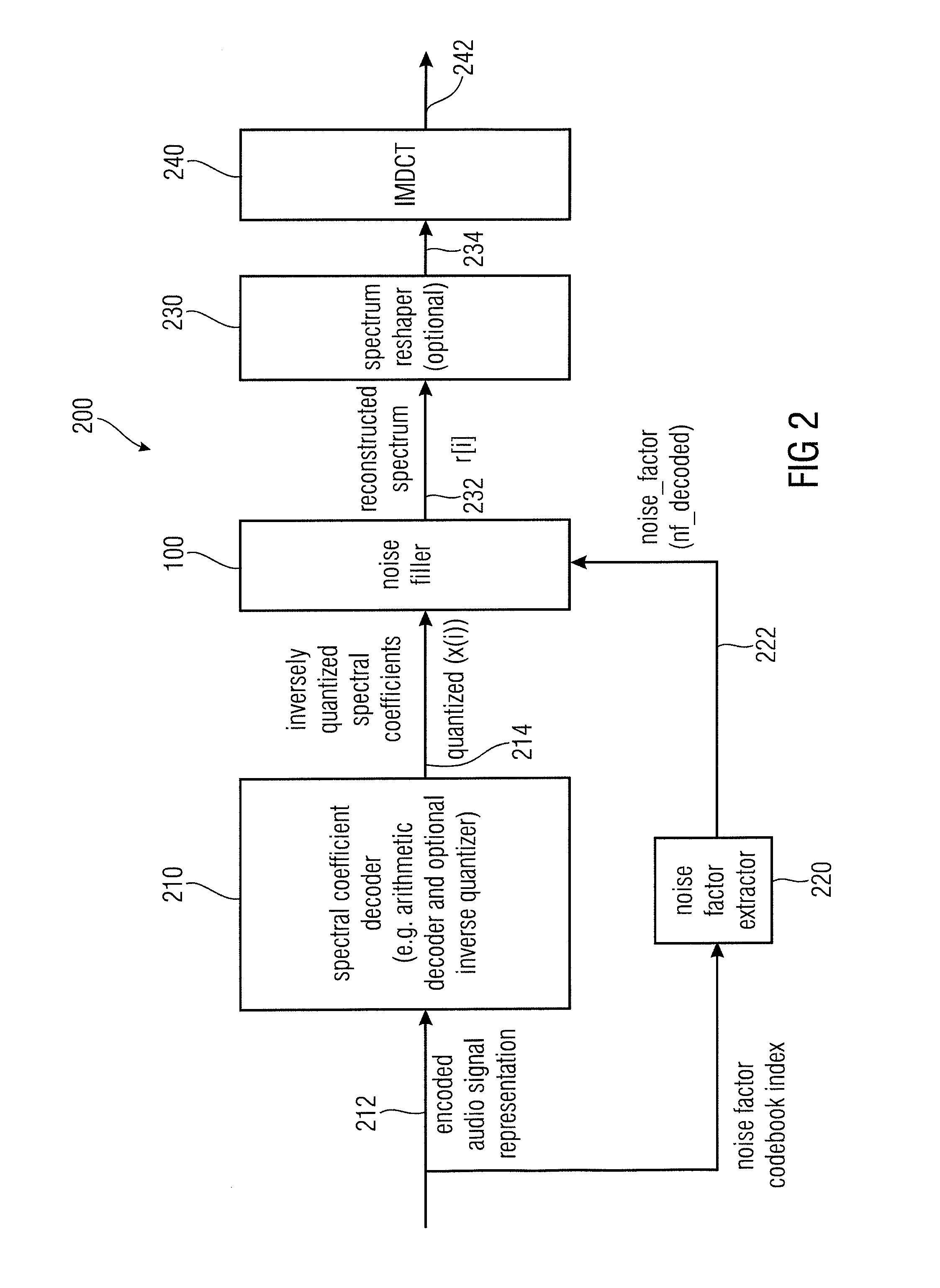[0018]This embodiment of the present invention is based on the finding that tonal components of the spectral representation of an audio signal are typically degraded, in terms of the hearing impression, if a noise filling is applied in the immediate neighborhood of such tonal components. Accordingly, it has been found that an improved hearing impression of a noise-filled audio signal can be obtained if the noise filling is only applied to spectral regions which are spaced away from such tonal, non-zero spectral regions. Accordingly, the tonal components of the audio signal spectrum (which are not quantized to zero in the quantized spectral representation input to the noise filler) remain audible (i.e. do not become smeared with closely adjacent noise), while the presence of large spectral holes is still efficiently avoided.
[0021]In an embodiment, the noise filler is configured to introduce noise only into spectral regions in an upper portion of the spectral representation of the audio signal, while leaving a lower portion of the spectral representation of the audio signal unaffected by the noise filling. Such a concept is useful as usually the higher frequencies are less perceptually important than the low frequencies. The zero quantized values also mostly occur in the second half of the spectra (i.e. for high frequencies). Also adding noise in the high frequencies is less prone to get a final noisy sound restitution.
[0024]It has been found that a detection of a certain “run-length” of spectral regions quantized to zero, is a task which can be implemented with particularly low computational complexity. In order to identify such a contiguous sequence of spectral regions, it is possible to decide whether all of the spectral regions within this sequence of spectral regions are quantized to zero, which can be performed using a relatively
simple algorithm or circuit. If it is found that such a contiguous sequence of spectral regions is quantized to zero, one or more of the inner spectral regions of the sequence (which are spaced far enough from spectral regions outside of the present sequence of spectral regions) are treated as identified spectral regions. Thus, by scanning through a range of spectral regions (e.g. by subsequently selecting different shifted sequences of spectral regions), an efficient analysis of the spectral representation can be made, to identify spectral regions quantized to zero and spaced from spectral regions quantized to a non-zero value by a predetermined
minimum distance.
[0028]In a further embodiment, the noise value calculator is configured to consider an actual energy of the quantization error of the identified spectral regions for the calculation of the noise filling parameter. It has been found that the consideration of an actual quantization error (rather than an estimated quantization error or an average quantization error) typically brings along improved results, because the actual quantization error typically deviates from the statistically expected quantization error.
[0029]In a further embodiment, the noise value calculator is configured to emphasize a non-tonal quantization error energy distributed over a plurality of identified spectral regions in relation to a tonal quantization error energy concentrated in a single spectral region. This concept is based on the finding that a non-tonal
wideband noise, an average energy of which lies below a quantization threshold and which is therefore quantized to zero, is perceptually much more relevant for the noise filler than a single tonal audio component, an intensity of which lies below the quantization threshold, even if the non-tonal
wideband noise quantized to zero and the tonal component quantized to zero were both quantized to zero. The reason is that the noise filler by generating a
random noise at the decoder can model missing non-tonal
wideband noise in the quantized spectral representation but not missing tonal components. Thus, an emphasis of non-
tonal noise components quantized to zero over tonal components quantized to zero, brings along a more realistic sound reconstruction. This is also due to the fact that a human hearing impression is degraded much more by the presence of a spectral hole (e.g. in the form of the absence of a wideband noise quantized to zero) than by the absence of a small spectral peak quantized to zero. A tonal component may be concentrated in a single
spectral line, or may be spread over several spectral contiguous lines (for example i−1, i,i+1). A spectral region may, for example, comprise one or more spectral lines.
[0031]Another embodiment according to the invention creates an encoded audio signal representation, for representing an audio signal. The encoded audio signal representation comprises an encoded quantized
spectral domain representation of the audio signal and an encoded noise filling parameter. The noise filling parameter represents a quantization error of the spectral regions of the
spectral domain representation quantized to zero and spaced from spectral regions of the
spectral domain representation quantized to a non-zero value by at least a predetermined number of intermediate spectral regions. The above-described encoded audio signal representation is useable by the noise filler discussed above and can be obtained using the noise filling parameter calculator discussed above. The encoded audio signal representation allows for a reconstruction of the audio signal with particularly good audio quality because the noise filling parameter selectively reflects the quantization error of the quantized spectral domain representation for such spectral regions in which a meaningful noise information is present and which should be selectively considered for a noise-filling at the decoder side.
 Login to View More
Login to View More  Login to View More
Login to View More 


